#my new vintage machine doesn't do zigzags
Text
I regret deciding to Hong Kong seam this project and have an awful feeling that this is going to end with me buying a fucking serger
#help there's no room in my flat heeeeeelp#my new vintage machine doesn't do zigzags#my old 'modern' machine doesn't do much of anything any more#what do
40 notes
·
View notes
Text
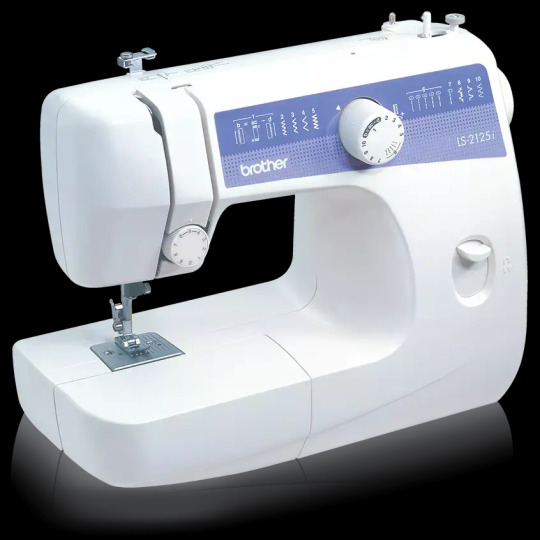
While I wait for the parts I ordered for the older sewing machines, I'm working on my "trusty" Brother (stock photo bc I didn't think to get a pic of her with her clothes still on). The one that wasn't worth paying to have it serviced, because it cost, when it was new, about the same as the service fee would've been, and that was 15 years ago.
Getting the plastic covers off was a bitch and a half, and that's with the service manual I downloaded. I took several wrong things off trying to find what was still holding it together, and eventually found a poorly-lit yt video of somebody doing this. Turns out there's plastic tabs that are fully absent from the technical drawings & service instructions, and you have to use a lot more force on those suckers than I'd've thought prudent.
But once you get in there...
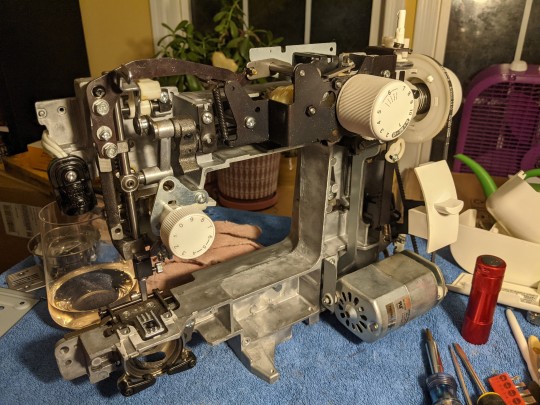
Oh, it's a sewing machine! This is recognizable & comprehensible now.
(That statement would've been wild to me a couple months ago, before I took apart & cleaned two older machines.)

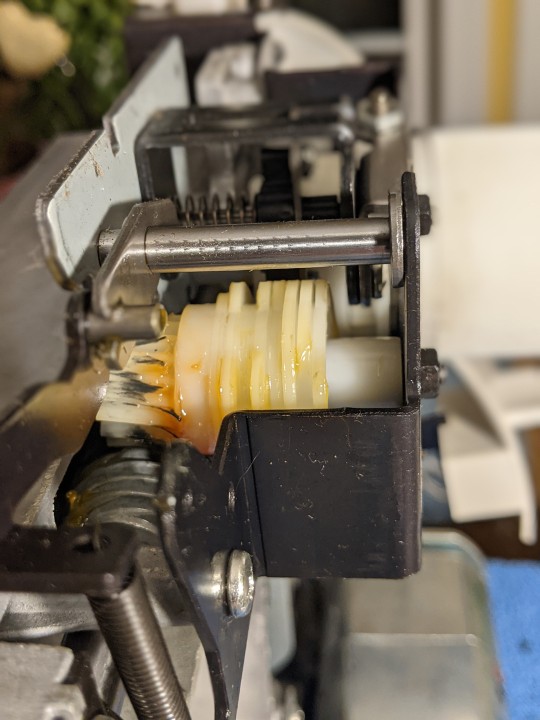
See, there's a standard presser bar, and the needle bar's a little different but that's so it can zigzag. And there's a plastic cam stack & a worm gear - simpler, actually, than on the 1960s Singer!

Even the tension assembly is, really, the same technology as on the 60 & 70 year old machines. It's hidden behind a tidy plastic knob, but with the covers off, there are the same opposed, convex tension discs, even the spring with the U-shaped guide on the end (this is apparently the "upper thread tension take up check spring").
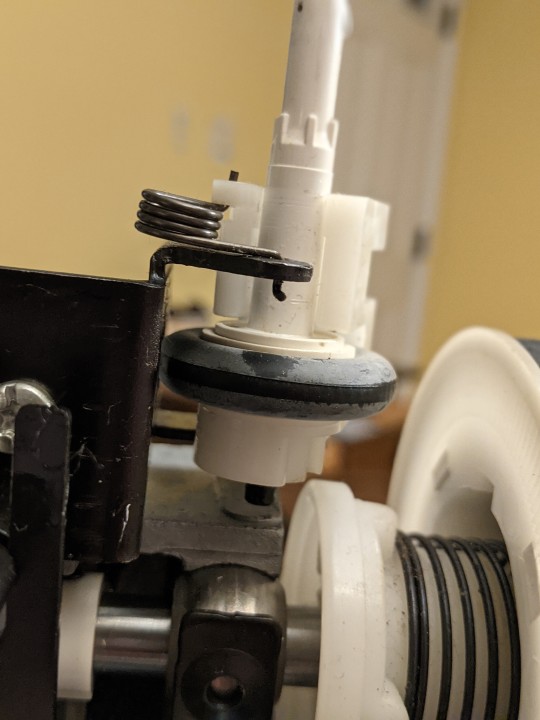
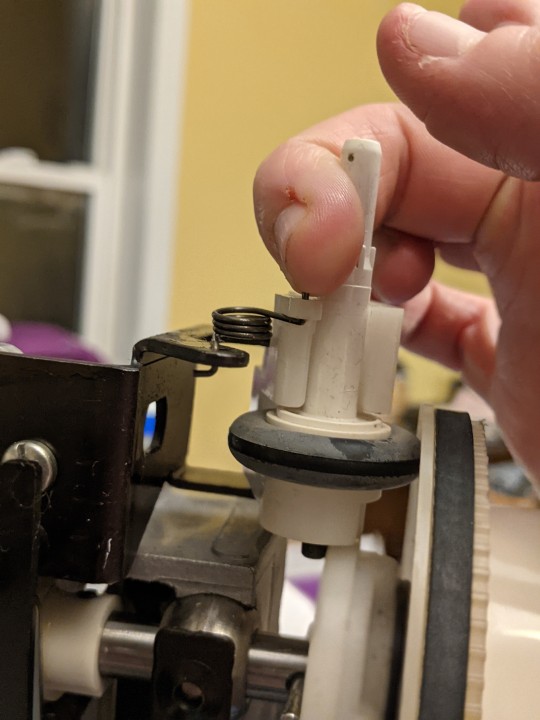
The bit that surprised me the most (by being exactly the same tech) was the bobbin winder. Idk how I thought it worked - maybe I never thought about it, you just put the bobbin on the thingy, pop it over, & go until it's full enough - but here inside the machine is a little rubber tire that moves to contact the inside of the handwheel, which spins it to fill your bobbins. The only real difference is that on the older ones you have to disengage the needle bar manually, so it doesn't move while you wind, whereas on the Brother the action of moving the bobbin winder into position does it automatically.
Here's the same thing on a 100 year old machine (not mine, alas):

Tire move up into contact with wheel (treadle or hand crank driven, at that stage) and spins to wind thread onto the bobbin. This one has the addition of the cute little heart-shaped gear on the thread guide, which serves to evenly wind on, because the bobbins were long & narrow, like a small spool of thread, and fit in a device much like a weaving or tatting shuttle, which was moved forward & back under the needle to form the lower stitches. Yes, they hadn't even invented the round bobbin & hook system that every sewing machine uses today, hadn't put motors on these machines, couldn't even go in reverse, but the bobbin winder? Same then, same in my two vintage machines, same today.
#the massive continuity of sewing machines#tbh new fancy machines might be doing this differently now#and idk how the ones that wind the bobbin in place work#vintage sewing machines#sewing machine repair#diy#mending is better than ending
24 notes
·
View notes
Note
I have what I'm pretty sure is a janome new home 532. Thoughts? Opinions?

Old is gold.
New Home zig zag machines fall into two categories, and no one but me defines them by this, but here's my experience with them.
See, when a needle zigzags, there's two parts to the motion. First, it has to go up and down, because it's a sewing machine needle and that's what they do. Second, it has to go zig and zag, because it's zig zagging.
Almost every sewing machine has the zig and zag motion happen at the point where the needle is in the up position. One New Home machine that I bought, which I bought because it was $25 and the prettiest blue machine I've ever seen, had the needle go zig and zag while the needle was in the fabric. It would sink into the fabric, then move left or right, and then come up out of the fabric. As you can imagine, this did not make a particularly attractive zig zag stitch.
If it doesn't do that, then it's a good old machine.

One of my favorite things about the New Home/Janome 532 is how many pages in the manual are dedicated to teaching you manual free-motion embroidery. I think free-motion embroidery like that is turning into a lost art and I think it's very cool to see how it used to just be a thing mentioned in the manuals. This one didn't even come with a spring-action foot so you just take the presser foot off and simultaneously hold the fabric down with your finger and try to not hit your finger with the needle since you have now removed all the protection you usually get with the presser foot. Like, lol have fun with that, safety is for n00bs
10/10, good vintage machine, bonus points for having it in a case instead of wobbling on your desk.
17 notes
·
View notes